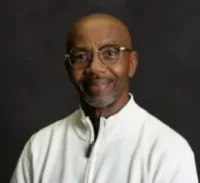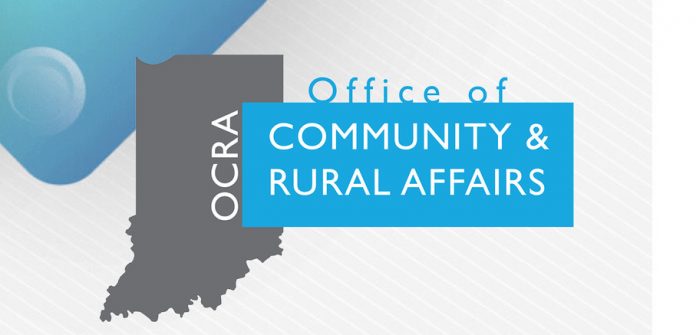Indianapolis – The Indiana Family and Social Services Administration (FSSA) will begin issuing full SNAP benefits . Eligible recipients can expect the funds to be available on their EBT cards starting Sunday, November 16. If your regular issuance date has passed, your benefits will be available on Sunday, November 16.
EPD DAILY ACTIVITY REPORT
FOOTNOTE: EPD DAILY ACTIVITY REPORT information was provided by the EPD and posted by the City-County-County Observer without opinion, bias, or editing.
MSOC: Aces’ Historic Season Ends In MVC Championship
EVANSVILLE, Ind. – Making their fourth MVC Championship game appearance in the last five seasons, the University of Evansville men’s soccer team fought for all 90 minutes, but came up just short against Western Michigan on Saturday night at Arad McCutchan Stadium.
The first half of play was a defensive battle, with both teams combining for only three shots in the first 45 minutes.
Both offenses turned up the pressure in the second half, with Tancredi Fadda (Monza, Italy/University of Milan) putting a shot on goal in the 49th minute and Michal Mroz (Elk Grove, Ill./Elk Grove) making his first save of the night in the 52nd minute. Evansville tallied four more shots in the next 11 minutes, including another shot on goal by Fadda, but could not find the back of the net.
Western Michigan broke through in the 73rd minute, scoring a bicycle kick goal to take a 1-0 lead.
The Purple Aces continued to fight in the final 17 minutes, creating a number of scoring chances. Evansville tallied nine shots in the remainder of the match, including shots on goal by Devin Shepherd (Denver, Colo./Arapahoe), Nacho Garcia (Zaragoza, Spain/UNIR), and Martin Wurschmidt (Stavern, Norway/Thor Heyerdahl VGS). However, the Broncos defense held strong, and Western Michigan took a 1-0 win.
On the night, Evansville out-shot Western Michigan 17-6, including a 7-3 advantage in shots on goal. Fadda had a game-high five shots, putting two on goal.
“It took us a while to get the game on our terms,” said Head Coach Robbe Tarver. “As we were starting to build pressure and get more consistent looks on goal, they took advantage of a set piece moment. I think we created enough to win the game, and it just didn’t happen. That’s the game.”
Andres Escudero (San Sebastián de los Reyes, Spain/IES Joan Miro), Garcia and Shepherd represented Evansville on the MVC All-Tournament Team.
Evansville ends the season with a 7-5-8 record overall and captured a share of the MVC regular season title and the number one seed in the MVC Tournament for the first time in program history.
Volleyball wraps up 2025 season
UE falls to SIU in season finale
EVANSVILLE, Ind. – Seniors Kora Ruff and Maddie Hawkins were honored as the University of Evansville volleyball team completed the 2025 season on Saturday at Meeks Family Fieldhouse.
Evansville dropped the finale by a 3-1 final to Southern Illinois. Hinsley Everett finished with 11 kills while Josdarilee Caraballo recorded 10 kills. Ainoah Cruz had 18 digs while Lexi Owen tallied 17 assists. The Salukis were led by Cecilia Bulmahn’s 15 kills.
Set 1 – SIU 25, UE 19
Southern Illinois opened the match scoring five of the first six points before going up 9-2. Lexi Owen recorded consecutive service aces to cut the deficit to three and Josdarilee Caraballo picked up a solo block and kill to tie the score at 13-13. At that point, SIU scored nine in a row to grab control. UE made it interesting down the stretch scoring five in a row, but the deficit was too much to overcome as the Salukis took the set.
Set 2 – SIU 37, UE 35
Evansville trailed by an early 3-1 margin until Caraballo picked up a kill to tie the score at 3-3. Chloe Cline and Makenzie Miller assisted on a block to give UE a 5-4 lead, however, the Salukis bounced back to go up 10-7. Caraballo added another kill to tie the game at 12-12 while Ryan Scheu picked up a kill to put the Aces on top at 19-18. The squads swapped the lead down the stretch before heading into extra points. Both teams had chances to win but it was the Salukis outlasting the Aces to take a 2-0 lead.
Set 3 – SIU 25, UE 20
Two block assists and a kill by Chloe Cline set UE up with a 4-1 advantage. Lexi Owen recorded an ace to make it a 6-2 game. The Salukis stormed back to take a 10-9 lead but the Aces regained the lead as a Caraballo kill helped to make it a 15-11 contest. Another kill by Cline established a 17-14 lead before SIU rallied. A 7-1 run gave them a 21-18 lead and they would hang on to clinch the match.
THUNDERBOLTS RALLY FOR FIFTH STRAIGHT WIN, 2-1 OVER STORM
The Word In 120, by Jerome Stewart
Truth Faith Trust, by Jerome Stewart
John 1 vs. 14 says; “And the Word became flesh and dwelt among us, and we beheld His glory, the glory as of the only begotten Father, full of grace and truth.” We are living in a world where those who profess to be the children of God, have gotten away from the teachings of God’s word, and in essence have become followers of the words of mankind relative to the subject matter.
There is a word defined in the dictionary as subjective. It means based on or influenced by personal feelings, tastes or opinions. In the world today telling the truth as taken a leave of absence and has become highly subjective, about anything from the religious world, the political, the media and so on.
In our system of justice when dealing with legal issues objectivity is always the goal in getting to the truth. The definition of objectivity means without bias, or prejudice.
Proverbs 23 vs. 23 says; “Buy the truth, and do not sell it, also wisdom and instruction and understanding.” A result of having respect for the truth, and a willingness to follow the truth wherever it takes us, is the acquisition of wisdom. For those who know Jesus as Lord and Savior, it’s true, that without a doubt, we get to go to heaven. That’s the ultimate goal. There is wisdom in knowing the end result after there has been a transition from this life.
We have faith, trust and hope in the truth of the words of Jesus to His disciples, such as the words in John 14 vss. 1 thru 3 where Jesus says; “Let not your heart be troubled; you believe in God, believe also in Me. In My Father’s house are many mansions; if it were not so, I would have told you. I go to prepare a place for you. And if I go and prepare a place for you, I will come again and receive you to Myself; that where I am, there you may be also.”
Does truth matter? Yes! It always has and always will. We are reminded everyday by those who have passed away the meaning of the words in James 4 vs. 14 which says; ‘whereas you do not know what will happen tomorrow. For what is your life? It is even a vapor that appears for a little time and then vanishes away.”
The truth of the matter is that all of our accomplishments or lack thereof in this life will be left behind. 1st. Timothy chapter 6 vs. 7 says; “For we brought nothing into this world and it is certain we will carry nothing out.” There is another truth that needs to be given careful consideration. The Apostle Paul said to the brethren in 2nd. Corinthians chapter 5 vs. 10; “For we must all appear before the judgment seat of Christ, that each may receive the things done in the body, according to what he has done, whether good or bad.”
Recovery Housing Program now open for applications
| The Indiana Office of Community and Rural Affairs’ Community Development Block Grant Recovery Housing Program is now open for applications.
The Recovery Housing Program provides funds to assist rural communities and their non-profit partners, if applicable, to establish or expand transitional recovery housing services for individuals recovering from substance abuse disorder. Proposals for the program will be accepted until 11:59 p.m. ET, on Sunday, Dec. 21, via the Indiana electronic Grants Management System, found here. Applicants are encouraged to submit their proposals prior to 4 p.m. ET on Friday, Dec. 19, as technical assistance will not be available after that time. Applications for the Recovery Housing Program will be accepted until 11:59 p.m. ET, on Sunday, Feb. 22, 2026. Applicants are encouraged to submit their applications prior to 3 p.m. ET on Friday, Feb. 20, 2026, as technical assistance will not be available after that time. Instructions on how to submit proposals and applications can be found at in.gov/ocra/cdbg/rhp/. Funding for all CDBG programs, such as RHP, comes from the U.S. Department of Housing and Urban Development and is administered by OCRA. For further information on these programs, contact the assigned regional OCRA community liaison. |
Hoosier History Highlights
|
|
||||||||||||||||||||||||||||||||||||||||||||||||||||||||||||||||||||||||||||
|
Riley Partnership Expands UE’s Reach in Mental Health Education and Care
EVANSVILLE, IND. (11/14/2025) A new partnership between Riley Children’s Health, Indiana University School of Medicine, and the University of Evansville (UE) will expand mental health training and care across Southwest Indiana, the institutions jointly announced Friday during Be the Light: A Celebration of Hope. In addition to announcing the new collaboration, the event brought together university officials, donors, and community partners to honor the individuals and families whose philanthropy has made a lasting impact on UE’s growing mental health initiatives.
The new Riley partnership, spearheaded by longtime university and Riley benefactors Lisa and Bob Jones, includes the creation of a Psychology Practicum at Riley Children’s Health/IU School of Medicine and an Annual Psychology Symposium that will unite behavioral health professionals, faculty, and students from Riley and the Evansville community. Together, these efforts will provide UE Doctor of Psychology (PsyD) students with valuable clinical experience and help address the growing need for youth mental and behavioral health services.
“Every child deserves access to compassionate, expert mental health care and that begins with training and supporting the professionals who will provide it,” said Leslie Hulvershorn, M.D., a child and adolescent psychiatrist at Riley Children’s Health and chair of the Department of Psychiatry at the IU School of Medicine. “Thanks to Bob and Lisa Jones and their generous gift, this partnership gives future psychologists hands-on experience while meeting an urgent need. It’s a meaningful step toward brighter futures for children and families across Indiana.”
The donation is part of the Riley Children’s Foundation Every Child Deserves Riley $300 million comprehensive fundraising campaign. A key priority of the campaign includes enhancing access to evidence-based youth mental health services.
Bob Jones is a Riley Children’s Foundation board member and will be stepping down this year after 20 years of distinguished service. Jones also served as Chair of the UE Board of Trustees prior to transitioning from the role earlier this year.
As part of Friday’s announcements, UE also revealed that the Doctor of Psychology (PsyD) program will now be named the Koch Family Doctor of Psychology in Clinical Psychology Program, honoring the visionary generosity of the Koch family. Their foundational support in 2021 has inspired a powerful network of partnerships, helping to expand mental health access, education, and clinical training across the region.
In loving memory of Emily M. Young, daughter of Judge Richard L. and Roseann Young, Lisa and Bob Jones generously provided a lead gift to establish the Emily M. Young Assessment Center within the UE Mental Health and Wellness Clinic in 2023. During Friday’s celebration, UE also announced the rededication of the clinic and the assessment center as the UE Emily M. Young Mental Health Clinic, recognizing Emily’s legacy and the continued leadership philanthropy of the Jones family.
Philanthropy has fueled every stage of UE’s expanding impact in this area.
“The generosity of the Jones family, the Koch family, and so many others continues to create pathways of hope-honoring lives, strengthening communities, and preparing the next generation of compassionate mental health professionals,” said University President Christopher M. Pietruszkiewicz. “The event served as both reflection and renewal, celebrating lives lost to mental illness, uplifting families who continue to advocate for change, and recognizing the collective hope made possible through community support and collaboration.”
The University has also launched the Be the Light Fund, ensuring the UE Emily M. Young Mental Health Clinic can continue its vital work for years to come. With the support of our partners and philanthropic donors, UE will continue transforming lives through education and service, leading with compassion and a shared commitment to the mental health and well-being of all.



















